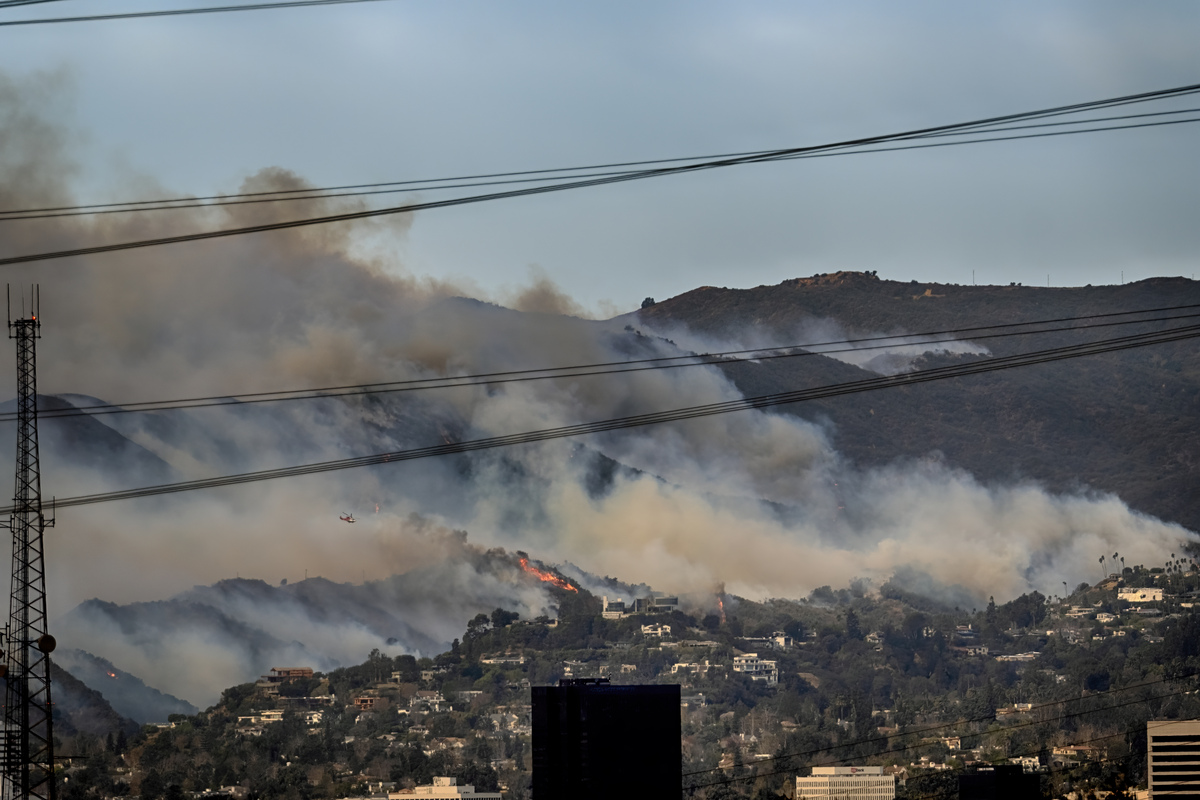Thick smoke from four wildfires has choked thousands of residents out of areas of southern California since Monday, with windstorms fanning the flames and preventing firefighters on the ground and air from making headway in extinguishing them, according to NBC News reports from Los Angeles.
So far the winds are carrying the smoke west toward the Pacific Ocean. But air quality specialists in Maine and New England are monitoring the smoke, which can carry thousands of miles via the jet stream or by other winds.
Smoke from western Canada wildfires reached Maine in the fall of 2023, when the state issued air quality alerts for five days as fires flared in the province of Alberta. That prompted the state of Maine to create a daily air quality website. Smoke from western Canada wildfires also reached parts of northern Maine briefly last summer.
Smoke can bring particle pollution that causes coughing, shortness of breath, throat irritation or mild chest pain, especially to vulnerable people, including children, older adults, and Mainers with lung or heart disease, according to the U.S. Centers for Disease Control and Prevention. The particles include residue from burning trees and houses, in addition to other fine materials that can get deeply into the lungs to irritate them.
The Bangor Daily News asked state air quality meteorologist Martha Walsh at the Maine Department of Environmental Protection’s Bureau of Air Quality what the risks are for the smoke reaching Maine, and how her department determines whether to issue air quality alerts. Below is a transcript of the interview, edited for clarity and brevity.
Lori Valigra, BDN: With four wildfires burning now in California, do Mainers need to prepare for smoke possibly reaching the state as it has from fires in western Canada in the past couple years?
Martha Webster, Bureau of Air Quality: At this point, I would say Maine doesn’t have to worry, as I’m looking at the U.S. Forest Service’s fire and smoke map. But depending on how long these fires burn, and the air transport, that smoke could make its way across the country.
It doesn’t necessarily have to reach the jet stream, which flows at high elevations from west to east. The airflow at lower levels could bring smoke wherever the winds are going to direct it, which means, if the winds are bringing it toward Maine, and the smoke pool is heavy enough that it remains intact, yes, it could come to Maine. But then the question is, does it remain a aloft, or does it come down to the surface?

Valigra: What would determine whether it stays above Maine or comes down enough to be a health risk?
Webster: A lot depends on the winds. There were fires in Quebec in June 2023. In early June, the wind direction protected Maine, but New York, Vermont, western Massachusetts, Connecticut and Pennsylvania all saw very high levels of particle pollution. But later in June, winds brought some smoke to Maine. The weather system moved, and Maine was no longer protected. With these fires, it’s a matter of how strong the fire is, how much smoke is produced, what level in the atmosphere it is in and what direction the winds take it. The whole thing is very complicated.
Valigra: Does the length the fires burn affect the particles in the smoke?
Webster: The longer a fire burns, the more smoke will be created from it. And if that smoke is not dispersed by the winds or if the winds keep it together, the density of the smoke can increase over multiple days. But again, it depends on how the winds flow and what comes to us. Right now and for the foreseeable future, I’m not seeing that those fires are a concern for us. But I’m not going to rule it out.
Valigra: How closely do you and other forecasters monitor wildfires?
Webster: Myself and other air quality forecasters in the northeast talk every afternoon during the summer months and one afternoon a week during the winter months. And so sometimes one of us may miss something, and the others will say, ‘Hey, I spotted this.’ There are various smoke models out there from the National Oceanic and Atmospheric Administration and government of Canada that can predict where smoke is going. But where it’s going physically does not tell us if it’s at the surface or aloft, so they are trying to come up with more tools to help us figure that out.
Valigra: Where can Mainers find information about wildfire smoke and air quality alerts?
Webster: They can visit our website or call the air quality forecast hotline at 800-223-1196. They also can find out the air quality in their municipality by putting in their zip code on the AirNow website or download the AirNow app. They also can sign up to get air quality notifications on EnviroFlash.
Environment reporter Lori Valigra may be reached at lvaligra@bangordailynews.com. Support for this reporting is provided by the Unity Foundation, a fund at the Maine Community Foundation, and donations by BDN readers.
